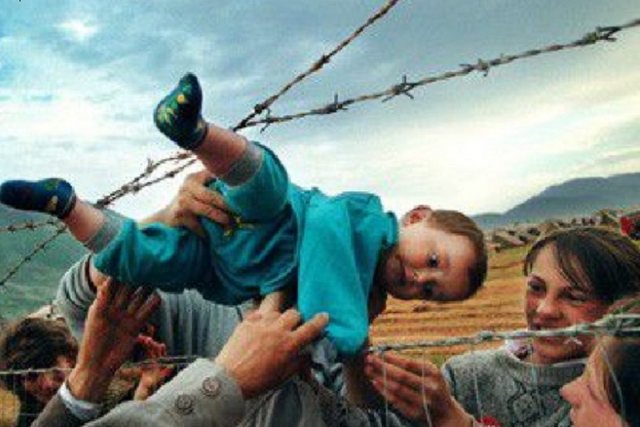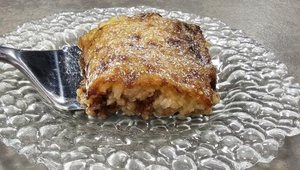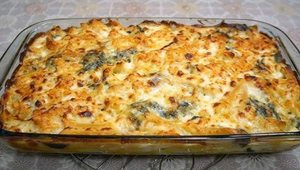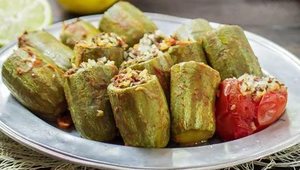
26 years since the exodus/ 1 million Albanians were forced to leave Kosovo by Serbian paramilitary forces


Today marks the 26th anniversary of the exodus of Kosovo Albanians, when during the 1998-1999 war, around one million Albanians were forced by Serbian paramilitary forces to move to Albania and Macedonia.
In addition to those displaced to Albania and Macedonia, thousands of Albanians also crossed the border into Montenegro, while hundreds of thousands were displaced from their homes to find refuge in the mountains of Kosovo.
They were children, women and the elderly, raped, tortured and massacred. On every anniversary of the 1999 exodus, which took on biblical proportions, Kukës commemorates, and in the last two years symbolically since the pandemic, this drama of suffering, one of the most terrible that the people of this land have experienced, KosovaPress reports.
The exodus, or the forced expulsion of Albanians from their homes, reached its peak after the start of NATO bombing against military and police points in the former Yugoslavia (Serbia and Montenegro).
On March 27, at 1:20 p.m., at the Vërmica/Morina customs crossing point, the first 187 refugees from Kosovo crossed into Kukës, most of whom were children and women, who were in a deplorable physical and mental condition and injured by sharp objects such as rifle butts, rubber batons, etc. Immediate measures were taken to transport them by civilian and military transport vehicles by the leaders of the Kukës Prefecture. They were mainly residents of the villages of Prizren, Krushë e Madhe and Zym. Initially, these refugees were sheltered in the “Hasan Prishtina” cultural palace.
By 24:00 on 27.03.1999, 12,721 Kosovars had arrived in Kukës. The first food aid came from the Albanian Ministry of Agriculture, where on March 27, contingents of food (oil, flour, sugar, pasta, rice, soap, etc.) for 2,500 people per month were sent to Kukës.
On March 28, the flow of Kosovars to Kukës, forcibly expelled from their lands by the Serbian invaders, continued. Their number was 13,000 inhabitants. Kosovar refugees entered Kukës from the Vërmica/Morin crossing point, where they were raped, tortured, massacred and stripped naked by Serbian police, taking their money, jewelry and any valuables they had.
Their temporary shelter was the Palace of Culture “Hasan Prishtina”. Then the local government in Kukës opened the doors of several schools, kindergartens, kindergartens, warehouses and depots to accommodate the displaced. Other refugees took shelter in Kukës families where they were welcomed by them. On average, each family in the city of Kukës had about 14 Kosovars. They slept in every part of the house.
At the beginning of the week, the second caravan of deportees arrived in Kukës, with about 70,000 Kosovars. Of these, 40,000 were settled with citizen families, 10,000 in various public places in the city, 6,000 in the municipalities of Bicaj, Kolsh, Tërthore and Shtiqën, 12,000 in the city of Kruma and 300 in the municipality of Golaj. 16 vehicles arrived in Kukës to evacuate some of the Kosovars to other cities. Day by day, the number of deportees increased. Despite sheltering in the homes of Kukës residents, a large number of Kosovars were sheltering in camps.
April 16 is the date when Exodus Day is celebrated in Kukës, as a sign of gratitude and respect for all those who open their doors to welcome their Albanian brothers from Kosovo.
One of the main symbols of April 16 is the Obelisk. The tower was built as a sign of gratitude to the Albanian people. It was built on the site where the tents that housed the Kosovar population were placed. The tower is 23.5 meters tall and is filled with photos that depict the events of that time. The tower is one of the most visited tourist spots in Kukës. During April 16, the tower is the most frequently visited spot.
To remember the days of the forced displacement of Albanians from their homes and their suffering from the Serbian regime, the “Bllaca '99” Memorial Center in Hani i Elezit stands the “Wall of Memory” monument and the “Hasan Prishtina” park.
The “Wall of Memory” monument is a mosaic that symbolizes the sacrifice of the Albanian mother, along with the names of some of the prominent world personalities who contributed to the liberation of Kosovo, an artistic-monumental work that best expresses the memory and respect for all those who brought the long-awaited freedom and independence./ Kosovapress

Scandal erupts: Poll against SPAK intercepted!
ideas

Don't make fun of Berisha's old age, but of his dream of becoming a groom again.


We will finally vote!
top
Alfa recipes
TRENDING 
services
- POLICE129
- STREET POLICE126
- AMBULANCE112
- FIREFIGHTER128
























